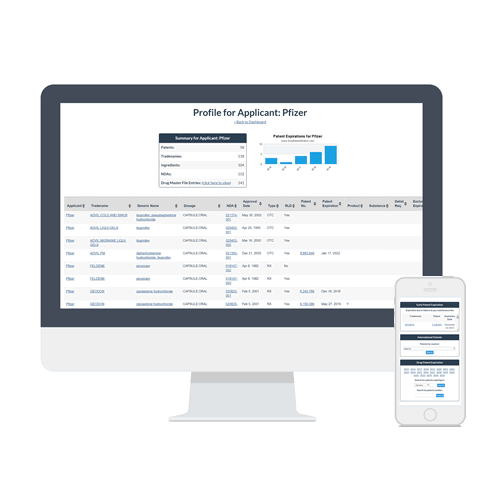
In the high-stakes world of pharmaceutical innovation, drafting detailed drug patent claims is a critical process that can make or break a company’s future. This intricate task requires a delicate balance of scientific precision, legal acumen, and strategic foresight. Let’s delve into the complexities of this crucial aspect of drug development and intellectual property protection.
Table of Contents
The Importance of Well-Crafted Patent Claims
Drug patent claims are the heart of pharmaceutical intellectual property (IP) protection. They define the scope of the invention and determine what aspects of a drug are legally protected from competition. Dr. Sarah Johnson, a patent attorney specializing in pharmaceuticals, emphasizes:
“The claims in a drug patent are like the fence around your property. They determine what you own and what others can’t touch without your permission. Poorly drafted claims can leave valuable aspects of your invention unprotected, while overly broad claims may not withstand legal scrutiny.”
Key Elements of Detailed Drug Patent Claims
1. Compound Structure
At the core of most drug patents is the chemical structure of the active pharmaceutical ingredient (API). Dr. Michael Chen, a medicinal chemist at PharmaCorp, explains:
“We need to describe the molecular structure with absolute precision. This includes not just the arrangement of atoms, but also stereochemistry, salt forms, and potential prodrugs. Every detail matters.”
2. Method of Synthesis
Patents often include claims covering the method of synthesizing the drug. This can provide additional protection, especially if the synthesis method is novel or non-obvious.
3. Formulation and Delivery
Claims may cover specific formulations of the drug, such as tablets, capsules, or injectable solutions. Novel delivery methods, like targeted nanoparticles or transdermal patches, can also be claimed.
4. Therapeutic Use
Many patents include claims for the use of the drug to treat specific conditions. These “method of use” claims can be particularly valuable, especially for repurposed drugs.
Strategies for Comprehensive Protection
Layered Approach
Experienced patent attorneys often use a layered approach to claim drafting. This involves starting with broad claims and then adding increasingly specific claims.
“It’s like casting a wide net and then adding finer meshes,” says patent strategist Lisa Wong. “We want to capture as much territory as possible while ensuring we have fallback positions if broader claims are challenged.”
Anticipating Future Developments
Forward-thinking claim drafting involves anticipating potential future developments. This might include claiming a range of dosages, combination therapies, or even potential metabolites of the drug.
Challenges in Drug Patent Claim Drafting
Balancing Breadth and Specificity
One of the biggest challenges is striking the right balance between broad protection and specific, defensible claims. Too broad, and the patent may be invalidated; too narrow, and competitors might find ways to work around it.
Navigating Prior Art
Patent claims must be novel and non-obvious in light of existing prior art. This requires thorough research and careful wording to differentiate the invention from what’s already known in the field.
International Considerations
With drug development being a global enterprise, patent claims often need to be drafted with multiple jurisdictions in mind. What’s allowable in one country may not be in another.
The Role of Interdisciplinary Collaboration
Drafting effective drug patent claims requires close collaboration between scientists, lawyers, and business strategists. Dr. Johnson notes:
“The best patent claims come from a true meeting of minds. Scientists understand the intricacies of the drug, lawyers know how to navigate the legal landscape, and business leaders provide strategic direction. It’s a complex dance, but when done right, it’s incredibly powerful.”
Case Study: The Lipitor Patent
One of the most successful examples of comprehensive patent protection is Pfizer’s cholesterol-lowering drug Lipitor (atorvastatin). The original patent covered not just the compound itself, but also its calcium salt form, which proved to be the most effective for oral administration. Additional patents covered the drug’s use for lowering cholesterol and various formulations.
This layered approach helped Lipitor maintain market exclusivity for an extended period, becoming one of the best-selling drugs of all time.
The Future of Drug Patent Claims
As pharmaceutical science advances, so too must the art of patent claim drafting. Emerging areas like precision medicine, gene therapies, and AI-designed drugs present new challenges and opportunities.
Patent attorney Dr. James Lee predicts:
“We’re going to see increasingly sophisticated claim structures to protect these complex innovations. The lines between traditional pharmaceutical patents and biotech patents are blurring. Adaptability and creativity in claim drafting will be more important than ever.”
Conclusion
Drafting detailed drug patent claims is a complex, high-stakes process that requires expertise, foresight, and strategic thinking. As the pharmaceutical landscape evolves, so too will the strategies for protecting these valuable innovations. For companies investing billions in drug development, getting these claims right isn’t just important—it’s essential for success in a fiercely competitive global market.
“In the world of drug patents, the pen is mightier than the pill. A well-crafted claim can be worth billions, while a poorly drafted one can cost a company its future.” – Dr. Sarah Johnson, Pharmaceutical Patent Attorney


